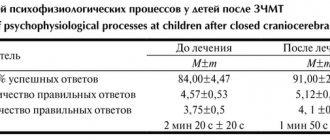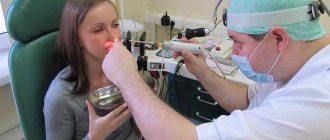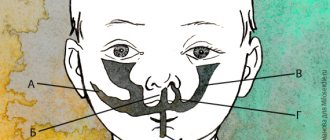What is Tanakan
A herbal preparation with a pronounced angioprotective effect. Normalizes oxygen and glucose metabolism, restores microcirculation, maintains normal tone of veins and arteries.
The active ingredient of the drug is an extract of the leaves of Ginkgo biloba biloba. The plant belongs to the category of medicinal plants and is known for its beneficial effects on blood vessels.
Tanakan is produced in several medicinal forms for oral administration:
- tablets: film-coated, containing 40 mg of ginkgo extract and formative components: MCC, talc, starch, lactose;
- solution: reddish liquid, sweet, with a citrus odor, containing: ginkgo biloba extract, water, ethyl alcohol, sweetener, flavorings.
Why take Tanakan
The mechanism of action of the drug is based on the property of enriching cells with oxygen and improving blood fluidity, preventing red blood cell aggregation. Tanakan affects vasomotor reactions, tones blood vessels, inhibits platelet production, affects general metabolism, and has an antioxidant effect.
The medicine helps eliminate the consequences of traumatic brain injuries, improve brain performance, and slow down the development of Parkinson's disease and cognitive disorders.
The effect of the drug begins 1–1.5 hours after administration and persists for 4–8 hours. Tanakan’s components do not accumulate in the body, are completely filtered by the kidneys and excreted in the urine after 10 hours.
Ginkgo biloba (ginkgo biloba) is a relict plant, the only surviving representative of the “Ginkgoaceae” class from the previously existing several dozen species. It grows wild in eastern China. Ginkgo is the oldest surviving tree species, dating back about 300 million years. Preparations obtained from the leaves of the ginkgo biloba plant have been used in traditional medicine in China and Japan for several thousand years. The amazing properties of the plant, its ability to withstand natural adverse factors were one of the reasons that this tree became one of the symbols of Tokyo.
It should be noted that on the modern international pharmaceutical market there are several dozen preparations made from ginkgo biloba leaves, both in the form of dosage forms and food additives, vitamin complexes, teas, gels, ointments, etc. More than 10 ginkgo preparations are presented on the Russian market alone . It is very important to know that ginkgo leaves, in addition to biologically active protective ingredients (which will be discussed below), also contain toxic ginkgolic acids, the minimum permissible concentrations of which may not be maintained in all preparations. The most studied and safest is the standardized extract - EGb761 (tanakan), produced for more than 40 years, the medicinal properties of which are studied by famous medical schools in Europe, Asia and America. A very popular marketing technique is to transfer the proven effectiveness and safety of one drug to all others that have the same starting raw materials. It is important for specialists to know that the production of EGb761 is a patented 27-step process of extraction of all components of ginkgo leaves, subsequent purification from ballast components and toxins, concentration of biologically active components, which makes the substrate a unique drug in terms of effectiveness and safety.
The history of modern research into the mechanisms of action of EGb761 goes back several decades, the amount of research conducted and accumulated material is very large, so the authors presented mainly materials from the last five years, without excluding, of course, key data from an earlier period.
It is known that one of the mechanisms of cell death is apoptosis, which can be accelerated by various factors. Summarizing the data accumulated to date on the mechanisms of action of the components of EGb761, obtained using unique methods of histology, histochemistry, DNA diagnostics, and enzyme-linked immunosorbent assay in laboratories in different countries, we can state the fact of a truly multimodal cytoprotective anti-apoptotic effect of the extract [1]. Action of EGb761: inhibition of apoptosis and apoptosis ligands (Fas mRNA), stabilization of the transmembrane potential of mitochondria, activation of metabolism, increase in the concentration of anti-apoptotic Bcl-2 protein, prevention of DNA fragmentation, inhibition of cytokine production, including TNF-α, IL-2, IL-4, interferon -gamma, activity as a “trap” of free radicals, activation of antioxidant defense components (mitochondrial superoxide dismutase, gamma-glutamylcysteine synthetase, glutathione transferase, NADP dehydrogenase), increased induction of a transcription factor that regulates the expression of antioxidant proteins, activation of genes encoding proteins that determine cell sensitivity to insulin.
Neuroplasticity can be defined as the ability of synapses to undergo structural adaptation in response to functional demands or dysfunction [2, 3]. EGb761 has been shown in preclinical studies to influence almost all aspects of improving neuroplasticity (long-term potentiation, spinal neuron density, neuritogenesis and neuronogenesis). According to the authors of the studies, of the three fractions of EGb761 (ginkgolides, flavonoids, bilobalides), the most active in relation to neuroplasticity are flavonoids, especially the aglycone isoramenthin [4].
Cognitive impairment
Cognitive functions include the most complex functions of the brain, through which the processes of cognition and interaction with the outside world are carried out. This is primarily memory, attention, as well as gnosis, thinking, speech and praxis. Among the main causes of cognitive disorders are neurodegenerative, vascular diseases, mixed vascular-degenerative disorders, dysmetabolic disorders, neuroinfections, demyelinating diseases, traumatic brain injuries, tumors, as well as liquorodynamic disorders [5].
EGb761 has been proven to be effective in the treatment of a wide range of brain dysfunctions, from neurodynamic to degenerative, vascular and mixed diseases. The main effects are associated with improved cerebral circulation, activation of mitochondrial function and protection of nervous tissue through neuroprotection [6].
Alzheimer's disease (AD) is known to be characterized by extracellular accumulation of beta-amyloid and microglial inflammation. The anti-inflammatory effect and mechanisms of this effect of EGb761 were studied using TgCRND8 transgenic mice with overexpression of amyloid precursor protein. The drug was given in food for 2-5 months, and plasma drug concentrations were maintained similar to those in humans taking the drug at a dose of 240 mg per day. A five-month course of treatment significantly improved the cognitive functions of mice, determined by the Barnes Maze test, reduced the loss of synaptic proteins (PSD-95, Munc18−1, SNAP25), and suppressed microglial inflammation. The secretion of pro-inflammatory cytokines (TNF-α, IL-1β) by microglial cells also decreased, and microglial autophages were suppressed. Two months of treatment did not have a statistically significant effect; moreover, EGb761 activated microglial macrophages. Additionally, EGb761 was found to reduce amyloidogenesis by inhibiting beta-secretase and beta-amyloid aggregation [7]. Another study [8] confirmed that catechins and procyanidin, which are one of the active components of EGb761, have the ability to inhibit amyloid A-beta aggregation and destabilize formed fibrils. A study was carried out on isolated components of EGb761, which showed the ability of its individual components to inhibit the aggregation of amyloid A-beta. It has been established that flavonoids 1, 3 and 4 have the greatest activity in this regard [9].
Considering the known cytoprotective properties of EGb761, the authors of another study [10] suggested its possible effectiveness in so-called conformation diseases, the key point of which is disturbances in the tertiary and quaternary structure of cellular proteins with the formation of intracellular deposits. The utilization of such abnormal molecules occurs in the cell's proteasomes, the activity of which may be reduced. The effectiveness of EGb761 was studied in a cell model of Huntington's disease with the expression of a pathological variant of polyglutamine protein (polyQ protein). It has been shown that EGb761 acts on these cells in two ways: it increases proteasome activity and induces more efficient degradation of protein aggregates. This study demonstrates a novel mechanism of EGb761's neuroprotective action through its ability to activate proteasomes and disaggregate protein deposits, which may be useful in the treatment of neurodegenerative diseases that are based on protein homeostasis.
New facts about brain aging were obtained in two prospective cohort studies, which showed that neurobiological changes in the brain begin at age 27 [11], with clear cognitive decline observed from age 37. Moreover, if cognitive changes in men and women under the age of 50 were similar, then after 60 years the percentage of changes was higher in the male group [12]. Interesting results were obtained in a prospective 20-year study of 3612 non-demented participants 65 years of age and older, 589 of whom had ever taken EGb761, 149 had ever taken piracetam, and the rest had never taken either drug [13]. Cognitive decline was observed less frequently in the group taking EGb761 than in the group not taking it. The authors conclude that this is a specific effect of EGb761, as it was not observed with piracetam.
Austrian researchers provide interesting results of pharmacoeconomic analysis [14]. They conducted a meta-analysis of the daily activities of 1201 patients with dementia who received EGb761 or placebo for 22-24 weeks in a double-blind manner. The delay in progression of impairment in activities of daily living was calculated. All costs of patient care were also assessed, including the cost of medications, doctor costs, government subsidies, and nurse costs. Data from the Cochrane Clinical Global Impression Scale for cholinesterase inhibitors were compared with corresponding data from this EGb761 study. Treatment with EGb761 resulted in a delay of 22.3 months in worsening activities of daily living scores compared with placebo. Total savings with EGb761 treatment ranged from EUR 3,692 to EUR 29,577, mainly due to slowing disease progression before additional nursing costs became necessary. According to preliminary calculations, the use of cholinesterase inhibitors requires higher treatment costs.
The monograph by A. Farooqui [15] (Department of Molecular and Cellular Biochemistry of Ohio University), dedicated to Ginkgo biloba [15], describes the effects of the drug in neurological practice: improving memory, concentration, reducing the manifestations of asthenia due to the specific antagonist to the factor produced by the components of the drug platelet activation, endogenous mediators of inflammation and nociception; dilation of blood vessels, activation of the release of endothelium relaxing factor and prostacyclin from vascular endothelial cells, reduction of platelet activation.
Among bioactive drugs, EGb761 is the most intensively clinically studied herbal agent. The goal is to identify treatment options for cognitive decline, dementia, and AD. Although some meta-analyses performed over the past 3 years have been negative for the prevention of AD, other randomized controlled trials of AD dementia and mild cognitive impairment (including patients with neuropsychiatric symptoms) have confirmed the beneficial role of EGb761 in cognitive impairment and dementia. The safety and tolerability of EGb761 are exceptional at all dosages. Analysis in subgroups of patients showed the clinical effectiveness of EGb761 mainly at a dosage of 240 mg per day and also confirmed a decrease in anxiety and depressive symptoms in a subgroup of patients with AD [16].
A meta-analysis conducted by R. Kaschel [17] analyzed 29 randomized placebo-controlled studies examining the effect of EGb761 on cognitive processes in mild cognitive impairment, depression, and multiple sclerosis in young and elderly people. Evidence has been obtained that long-term administration of the drug improves attention, performance and long-term memory in the assimilation of verbal and non-verbal information. One of the latest meta-analyses of randomized controlled trials showed the effectiveness of EGb 761 in the treatment of various types of dementia in patients over 60 years of age [18].
Another meta-analysis of studies was conducted to clarify the effectiveness of EGb761 in dementia. Of the 15 randomized controlled trials, 7 met the inclusion criteria for the meta-analysis. In these studies, patients received 120–240 mg per day of EGb761 or placebo. Efficacy was assessed using validated rating scales of cognitive impairment, functional functioning (activities of daily living), and clinical global impression. Data from 2625 outpatients were analyzed. Statistically significant differences in the EGb761 therapy group from the placebo group were obtained on cognitive scales, scales of daily activities and clinical global impression. Statistically highly significant differences were found in patients with dementia and neuropsychiatric symptoms (anxiety and depression). Side effects and rates of premature treatment discontinuation did not differ between subgroups [19].
Another meta-analysis of data from Cochrane and other relevant databases (as of March 2014) on the effectiveness of EGb761 in the treatment of dementia and possible side effects was carried out by a group of scientists from medical schools in the USA and China [20]; 9 studies met the required criteria. These studies lasted 22–26 weeks and included 2561 patients. According to the results of the meta-analysis, the treatment results of patients taking EGb761 were better than those in the placebo group (cognitive scales, daily activities), and on the Clinical Global Impression scale they were statistically significantly superior to placebo. In a subgroup of patients with neuropsychiatric symptoms (anxiety and depression), EGb761 had a statistically significant effect on improvements in cognitive function, activities of daily living, and Clinical Global Impression scores. In the subgroup of patients with diagnosed asthma, the results did not differ significantly from the general group. The drug was well tolerated, no serious side effects were noted. The authors concluded that EGb761 at a dose of 240 mg per day may stabilize or slow decline in cognitive function, activities of daily living, behavioral disturbances, and global assessment after 22 to 26 weeks of dosing in cognitive impairment or dementia, especially in patients with neuropsychiatric symptoms.
The GINDEM-NP, GOTADAY and GOT-IT studies showed that a dose of 240 mg per day of EGb761 was significantly more effective than placebo in reducing the severity of neuropsychiatric symptoms, improving cognitive function, activities of daily living and quality of life in patients with mild to moderate dementia. The combination of EGb761 with donepezil (10 mg per day) was more effective than monotherapy with these drugs. Cross-comparison of studies of various antidementia drugs allowed the author to conclude that EGb761 is at least as effective as memantine, galantamine and donepezil [21].
Positive experience with the use of EGb761 for cognitive decline in patients with chronic vascular lesions of the brain was obtained by domestic researchers. In an open-label, multicenter study, 108 middle-aged and elderly patients with early stages of cerebrovascular insufficiency received EGb761 120 mg per day for 90 days. The severity of subjective and objective neurological symptoms, the degree of cognitive and behavioral impairments were assessed [22]. As a result of the treatment, the volume of memorization and reproduction of information increased, concentration and stability of attention improved, positive dynamics concerned associative processes and psychomotor functions. An improvement in well-being was also noted in the form of a decrease in the frequency and severity of headaches, dizziness, noise in the head, and restoration of sleep structure.
In a review on the prevention of cognitive impairment in elderly patients using tanakan [23], it was suggested that the preventive effect of the drug is associated with its effect on vascular risk factors for cognitive impairment. The summarized data made it possible to determine predictors of the effectiveness of the drug, namely: male gender, the presence of arterial hypertension and obesity.
Cerebrovascular diseases
Numerous experimental studies have revealed many of the molecular mechanisms of the neuroprotective effect of EGb761[6]. It was found that in rats with a model of non-traumatic subarachnoid hemorrhage, the use of EGb761 is accompanied by an increase in the expression of endothelial growth factor, the concentration of which (as well as the concentration of the corresponding mRNA) significantly increases 24 and 72 hours after the start of treatment. Thus, the use of EGb 761 has a protective effect on tissues by increasing the expression of growth factors [24].
Evaluation of the effect of EGb761 on a model of ischemic brain injury in rats using MRI (diffusion-weighted imaging), behavioral tests and immunochemical analysis of brain tissue showed that EGb761 significantly increases the diffusion coefficient in the central and peripheral areas of ischemia, improves behavioral reactions, and enhances the expression of brain nerve growth factor [25].
EGb761 is known to provide neuroprotection against ischemic brain injury through several mechanisms. Some of these mechanisms are related to calcium metabolism.
Hypocalcin is a calcium-binding protein that belongs to a family of neuronal calcium sensors that regulate many cellular processes, including ion channel modulation and permeability, neurotransmitter release, synaptic plasticity, apoptosis, and gene expression. Information has been obtained on the connection between neuronal calcium sensors and diseases such as cancer, schizophrenia and AD. A study in a mouse model of ischemic stroke by middle cerebral artery (MCA) occlusion showed that EGb761 has a neuroprotective effect in ischemic damage, including by maintaining normal hypocalcin expression [26]. Parvalbumin is a calcium-binding protein that regulates intracellular calcium concentration and thus influences apoptosis. The effect of EGb761 on the expression of parvalbumin in ischemic brain damage was studied. A model of ischemic stroke was created in rats by clamping the MCA. One group of animals received EGb761 before clamping, the other received an inert substance. Rats treated with EGb761 showed a less significant decrease in parvalbumin expression. This study revealed another mechanism of the neuroprotective and antiapoptotic effect of EGb761—maintenance of normal parvalbumin expression in the ischemic brain [27].
Another study was conducted at the Texas Tech University Health Center to determine the neuroprotective properties of EGb761 in an experimental stroke model by measuring glucose and glutamate concentrations in the striatum using microdialysis. The method of glucose-oxygen deprivation of brain slices in
vitro
and MCA occlusion in mice
in vivo
.
EGb761 reduced ischemic cell swelling in hippocampal slices by 60%. In vivo,
EGb761(300 mg/kg) reduced cellular degeneration and swelling after MCA clamping by 35-50%. Immediately after MCA clamping, glucose levels in the striatum dropped by 25%, and this was not corrected by the use of EGb761. In contrast, the level of glutamate in the striatum increased 15-fold after clamping the MCA, and with prior administration of EGb761, the glutamate level increased only 4-5-fold. The authors concluded that pretreatment with EGb761 significantly reduced cellular swelling and neurodegeneration during ischemia. The mechanism for this phenomenon may be a reduction in glutamate excitotoxicity, since ischemia-induced glutamate secretion was significantly suppressed. The authors believe that EGb761 may be a valuable tool for preventing brain damage in patients predisposed to stroke [28].
In patients with vertebrobasilar insufficiency, administration of EGb761 had an effect in the form of improvement in cognitive function according to psychometric tests [29].
Follow-up observation of patients with initial signs of cerebral circulatory failure allowed us to establish the long-term positive effect of EGb761, the severity of which persists for a long time after the end of the course of treatment [30]. The results of other domestic studies also confirm the high effectiveness of tanakan in the treatment and prevention of the progression of encephalopathy in patients suffering from vascular diseases [22,31,32].
Conclusion
The experimental and clinical data accumulated to date allow us to qualify EGb761 (tanakan) as a universal cytoprotector of many systems (brain and spinal cord, myocardium, retina, lens, intestines, kidneys, reproductive system).
Available data allow us to conclude that EGb761(tanakan) has a cytoprotective effect by activating the cell genome and the expression of cellular defense factors against ischemic damage, energy depletion and free radicals.
The vast majority of studies (experimental and clinical) were carried out using tanakan, which leads to an unambiguous conclusion about the incorrectness of transferring the positive results of tanakan studies to other ginkgo preparations, as well as the incorrectness of transferring data on the ineffectiveness of other ginkgo preparations or their side effects to tanakan.
Based on modern data on the subclinical (much earlier than previously thought) debut of many vascular, neurodegenerative, metabolic, stress-induced damage to the nervous system, it can be considered advisable to prescribe tanakan for the purpose of neuroprotection at a young age when the first signs of maladaptation syndrome appear (“ “vegetative dystonia syndrome” in domestic practice), one of the symptoms of which is memory impairment (decreased tolerance to intellectual stress).
It is advisable to determine the duration of treatment based on the clinical situation. At a young age, this may be “situational” (1-3 months) treatment, depending on the duration of symptoms. At an older age and/or in the presence of persistent symptoms or their rapid return after treatment, constant use of Tanakan is advisable (similar to constant treatment with antihypertensive drugs, antiplatelet agents, hypoglycemic and other drugs for the treatment of chronic diseases).
Are there any contraindications for Tanakan?
Like most angioprotectors, this drug is prohibited for use in the following conditions:
- internal bleeding;
- hemorrhagic stroke;
- exacerbations of stomach ulcers, erosive forms of gastritis;
- low blood clotting;
- myocardial infarction;
- chronic malabsorption of glucose, lactase deficiency;
- hypersensitivity to the components of the drug or an allergic reaction to them.
With simultaneous treatment with anticoagulants, taking aspirin and other antiplatelet agents, dosage adjustment and more careful monitoring of prothrombin time are required. The drug should be used with caution in cases of liver and kidney dysfunction.
Side effects of Tanakan
In most patients, the medicine does not cause unwanted reactions. Occasionally, during therapy, headaches, nervous agitation, worsening sleep, tachycardia, digestive disorders, and nausea are possible. Signs of an allergy to the drug may include swelling of the mucous membranes, itching, and urticaria.
The risk of side effects increases when combined with antibiotics, antimycotic drugs, antidepressants, and drugs to lower sugar levels.
In such cases, it is recommended to stop taking Tanakan and discuss the situation with your doctor.
A neurologist named common mistakes in the fight against migraine
When people in any country in the world are asked what spoils their health most often, the undisputed leader emerges: headaches. It can begin after vaccination against coronavirus and is painful when contracting covid. Pierces during strokes and torments during brain tumors. However, in the vast majority of cases, there are two types of so-called primary headaches, that is, not associated with other diseases (as opposed to secondary pain, for example, with tumors or vascular accidents). These are tension headaches and migraines. The latter, according to the World Health Organization, affects more than a billion people, or every seventh inhabitant of the Earth. Every September there is a special International Migraine Awareness Week. What scientists and doctors have learned about this scourge recently and what misconceptions about migraine and its treatment are most common today, Margarita Naprienko, the head physician of the Academician Wayne Clinic for Headache and Autonomic Disorders, neurologist, Doctor of Medical Sciences, Professor at Sechenov University, told reporters.
PROBLEM 1: THIS IS NOT A DISEASE “Traditionally, in Soviet times, and I was still in this period, we practically did not treat headaches,” says Professor Naprienko. - On the one hand, there was such a disease, everyone knew it. On the other hand, it was as if it did not exist, because our patients could not receive sick leave. There were common expressions like “Migraine - too lazy to work”, they are still tenacious. And many patients do not come to specialists for precisely this reason. According to epidemiological data, with episodic migraine, which occurs up to eight times a month, only every fourth person consults a doctor. If headaches occur more often, only half, every second, go to specialists.
In fact, migraine, of course, is a full-fledged independent disease, the expert explains. Although, even today this disease remains a mystery for scientists and doctors.
PROBLEM 2: WHERE DOES IT COME FROM - The final theory of the origin of migraine and the development of the attack has not been formed. Great steps have been taken in this direction; some of the processes are clear to specialists, but the mechanism has not yet been fully studied,” says Margarita Naprienko. “We know that there are people with a certain functioning of the brain: they are susceptible to easy arousal under the influence of a variety of provoking factors. Against the background of such provocateurs, certain neurochemical processes in the brain are triggered, during which the levels of various substances change. Among them is serotonin, popularly known as the “pleasure hormone.”
Under the influence of the ongoing processes during migraine, the so-called “cortical spreading depression” develops, the doctor continues. It manifests itself in a decrease in the electrical activity of brain cells. “This wave travels through the brain tissue, causing vasoconstriction, which leads to decreased blood flow to the brain. During this period, people may experience a headache precursor such as an aura (see details below), says the professor. “However, this wave passes quickly enough, and the vessels begin to expand. Inflammation develops in them, blood flows into the inflamed wall of the vessel, and during this period people begin to feel pain.”
With migraine with aura, a cascade of different neurological symptoms is observed before the headache attack.
- These may be changes in vision, sensitivity, speech impairment. But it is very important that these changes are reversible, that is, they can last from five minutes to an hour, and must pass without fail, emphasizes Dr. Naprienko. “When this happens for the first time, patients get very scared, and doctors can’t always figure it out. Such reversible symptoms may be mistaken for acute cerebrovascular accidents (stroke).
PROBLEM 3: THERE IS NO LIFE THREATENING, BUT ITS QUALITY IS RADICALLY DECREASING Migraine is not a life-threatening disease, explains Margarita Naprienko. And because of this, patients often encounter misunderstandings from acquaintances, loved ones, colleagues and employers.
- The person seems to be healthy, his arms and legs are in place, he stands, he can work from the point of view of others. And at the same time he says that he cannot do anything. I am not aware of any cases where employers fired people because of migraines in Russia. But families in which migraine caused serious problems in relationships met at the reception. It was even necessary to write ridiculous certificates stating that the patient might actually be poorly able to work or completely incapacitated for a certain period of time. And, accordingly, during this period they are recommended to have relative peace.
What will happen if you do not engage in special treatment for migraines, endure attacks, and in the case when they are completely unbearable, call an ambulance? This is the approach that most patients practice, the doctor confirms.
- Of course, you can endure it, understanding that the attack will end. But it’s one thing if a person is not burdened with anything, does not work, and has no children requiring supervision. Then, perhaps, he can lie down in a dark room and wait for the torment to pass. But if continuous vomiting and a bursting headache begin, then people call an ambulance. Alas, in fact, it cannot greatly alleviate the condition of migraines, explains Professor Naprienko. — Yes, against the background of severe pain, a person’s blood pressure may jump and panic may begin, then sedatives will be administered to normalize the pressure. But the ambulance does not have the resources to act on the pain attack itself during a migraine.
PROBLEM 4: HOW TO BE TREATED? There are two approaches, the expert says. For episodic migraines (attacks no more than 8 times a month), medications are used to relieve headache attacks. If migraine occurs frequently, then preventive therapy is prescribed - it makes attacks less frequent and reduces pain.
“It is impossible to completely recover from migraine, because it is a genetically determined disease,” explains Margarita Naprienko. “But today it is quite possible to make attacks rare and not severe, which most patients do not know about.
The gold standard for treating a migraine attack is taking aspirin, the professor continues. “Better than effervescent, always in a large dosage, 1,000 mg (pay attention to contraindications! - Ed.). Anti-nausea medications may also be added if present. Very often, during a migraine attack, medications are poorly absorbed in the stomach, and then we prescribe drugs that enhance peristalsis. And we recommend low doses of caffeine. This could be a cup of sweet tea, coffee or even Coca-Cola.
An important point: if a person has a headache, it is extremely undesirable to immediately take a pill, emphasizes Dr. Naprienko. The body has a system to counteract pain and it is quite possible that it will cope without allowing an attack to develop. The same tea, coffee or cola can help. Taking painkillers too often and too quickly can lead to the development of so-called drug-induced headaches, warns a neurologist.
- If an hour has passed and your head still hurts, then you need to take triptans. They were created specifically for the relief of migraine attacks and made a real revolution (the first medicine of this class was registered back in 1991 - Ed.). Just keep in mind that triptans cause vasoconstriction, so they are not recommended for use during a migraine aura (see above) - if a person develops this condition, it is advisable to take aspirin first. Perhaps it will allow you to avoid an attack altogether. If not, then after the aura disappears, a triptan is taken.
PROBLEM 5: ADDITION TO MEDICINES “Triptans, which quickly relieve an attack and return a person to work, have a peculiarity: if used incorrectly, addiction to them can quickly develop,” notes Professor Naprienko. “That’s why we always warn patients: they need to strictly control the amount of medications they take. As soon as the figure exceeds 8 doses per month for triptans and 10-12 for simple analgesics (aspirin, citramone, paracetamol, ibuprofen, etc.), this is a direct indication for contacting a specialist. So that the patient is prescribed adequate therapy and preventive treatment is selected.
If you continue to swallow painkillers in huge doses and in huge quantities, then the aforementioned drug-induced headache develops, and the person ends up in a vicious circle, the doctor explains.
For the treatment of frequent, chronic migraines, botulinum toxin type A drugs are used as a preventive treatment, as well as new generation drugs based on monoclonal antibodies. The latter appeared in our country quite recently, about a year ago, and only a doctor can select and prescribe them.
STAY IN THE KNOW How to recognize a migraine
To make a diagnosis, doctors interview the patient. You can check yourself yourself. Here are the main signs of migraine:
- headache attacks last from 4 to 72 hours and are repeated;
- pain has at least two characteristics from the list: strong, throbbing, one-sided, makes you move less (intensifies with bending over, physical activity);
- there is also at least one of these symptoms: nausea, irritation by light and (or) sounds.
Link to publication: kp.ru









